
In the mid-1950s, with America's military-industrial complex embroiled in the Cold War, American rifle development was occurring at a breakneck pace, as manufacturers scrambled to satisfy the requirements of the US Army's M14 replacement program. And at the center of much of this scrambling? Eugene Stoner and his employer, ArmaLite.
A division of the Fairchild aircraft company, where Stoner had worked as an engineer before embarking on his storied career as a firearms designer, ArmaLite's struggles throughout the US Army selection process led to Fairchild essentially parting ArmaLite out; selling the rights to both its AR-10 and AR-15 rifle designs to Colt in 1959. This left ArmaLite without any comparable products to the rifles Stoner had just designed for the company, and so, Eugene Stoner went to work on what would be his last ArmaLite project: the AR-16.
A modern semi-automatic rifle in 7.62 NATO, the AR-16 looked to provide the same lightweight and easy-shooting performance as the AR-10, but at a lower cost, thanks to the use of stamped steel components and receivers where the AR required milled aluminum components. Only three AR-16 prototypes were ever made, however, as Stoner departed ArmaLite in 1961 to serve as a consultant for Colt.
But the US Army's adoption of Stoner's AR-15 vindicated the notion that semi-automatic rifles shooting small-calibre, high-velocity projectiles were practical and effective, and ArmaLite knew the AR's selection would be a watershed indicator of what other militaries would be looking for. So, ArmaLite's Art Miller took Stoner's AR-16 design, and reengineered it to work with the then-new .223 Remington, or 5.56 NATO rounds. The result was the AR-18… or as the semi-automatic variants are known, the AR-180.
And while the AR-15 has become an almost ubiquitous symbol of Western military power, the AR-18 was hardly unpopular, and it was produced everywhere from Japan by Howa to England by Sterling. It was used by various armies, police forces, and most famously, the Provisional IRA in Northern Ireland.
More recently, the AR-180 has taken on a bit of a cult-like following by those that appreciate the rifle's simple nature and gas-piston operation; as recently as 2001 ArmaLite themselves introduced an updated civilian version of the rifle known as the AR-180B. This rifle did away with some of the more battlefield-ready AR-18's features (such as a dust cover) and traded the now-expensive to make stamped lower receiver for a molded polymer unit that accepted stock AR-15 triggers. A good gun, the polymer lower let the rifle down, and in 2007 the AR-180B was discontinued due to poor sales.
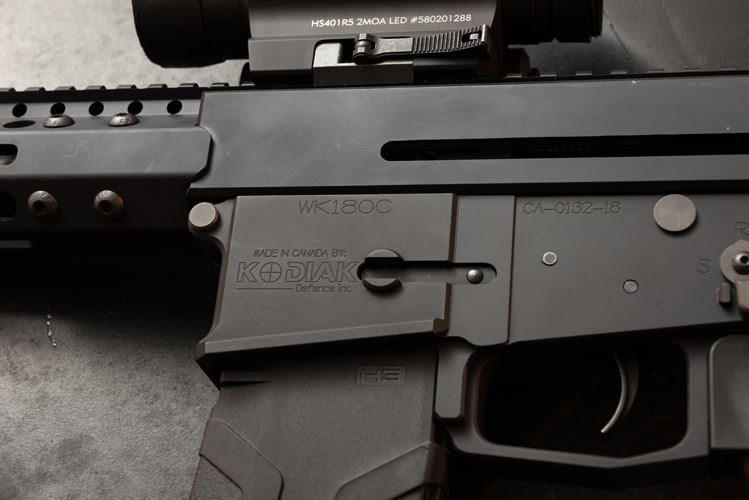
Bringing the full might of modern five-axis computer-aided machining to Eugene Stoner and Art Miller's design, the WK180-C does away with the stamped steel and polymer construction of the AR-18, 180, and 180B, and instead uses 6061-T6 aluminium to form the upper and lower receivers… just like the then-more expensive AR-15 series of rifles Stoner created the AR-16 to compete against. There's a bit of irony in that, given the WK180-C is among the most affordable non-restricted black rifles on the market.
Yes indeed, this modern marvel of a decades-old design is just $1095. That's hundreds less than comparable products like the Kel-Tec RDB we recently reviewed, and well below half what you'll spend to get either an ACR or Tavor. Hell, it's just $100 more than the non-restricted Maccabee Defense SLR receiver set... and that's just a stripped upper and lower receiver set, whereas this is a complete rifle.
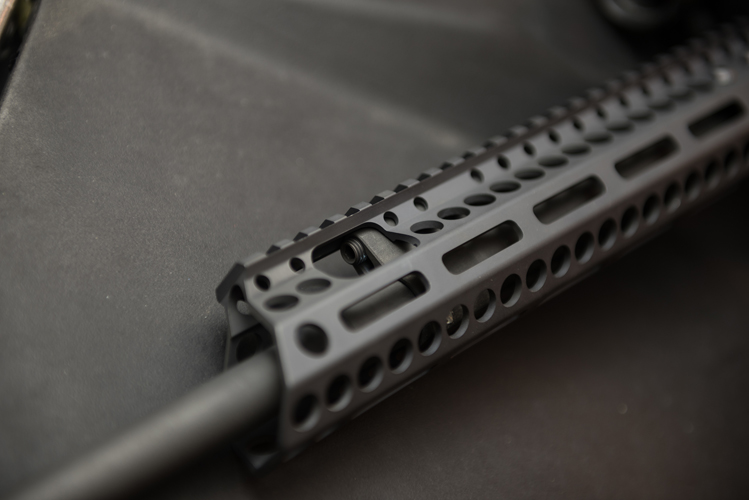
Because the gun doesn't use either a buffer or buffer spring assembly, no part of the action extends beyond the back of the upper receiver, and so the stock is mounted to a stock adapter; the commonality of M4-style buttstocks made an AR-15 style buffer tube the natural choice for at least the first run of WK180-C rifles. But moving forward, there has been promises of additional stock adapters to accept Robinson Arms, AK, and folding stocks
The WK180-C ships in a relatively innocuous cardboard box, with two Hera 5-round polymer magazines, and no sights. Ours came out of the box relatively dry, which was a pleasant change from the relatively sodden manner in which we find most new guns packed, and both fit and finish are excellent. The anodizing is excellent, and the markings are all nicely milled into the receiver. Likewise, the finish of the parkerized barrel is similarly excellent, and although the factory furniture is rudimentary, it works well out of the box. In fact, the only fly in the proverbial ointment we could locate on our fresh rifle was a telltale toolmark on one of the handguard screws where the allen key obviously slipped slightly in installation.
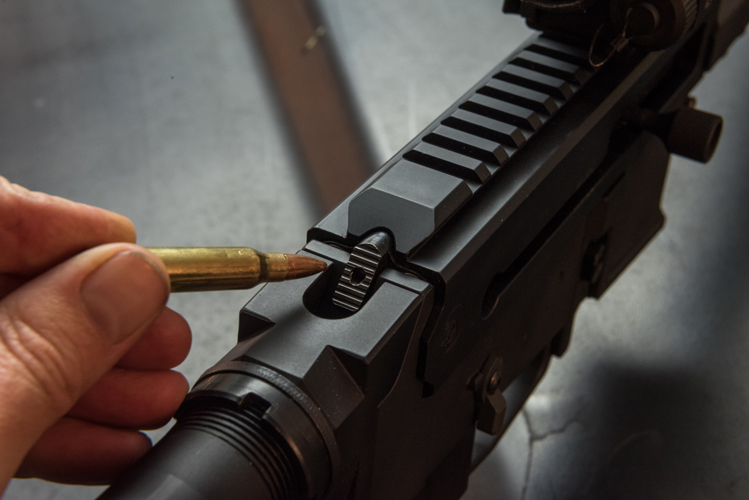
Field stripping the rifle is very easy, and simply involves pushing forward on the backing plate at the rear of the upper receiver, and hinging the upper and lower apart like one would an AR-15. This can be done my mashing your finger into the serrated latch, but because it needs to be depressed almost beyond flush with the top rail, we found it much easier to stab a bullet into the provided hole in the latch and use that to push it forward.

At the firing line, the gun's lively feeling doesn't go away with a fresh magazine in the magwell. Due to the gun's rearward weight balance and very small-diameter handguard it simply feels small; closer to a 10/22 than the average AR-15.

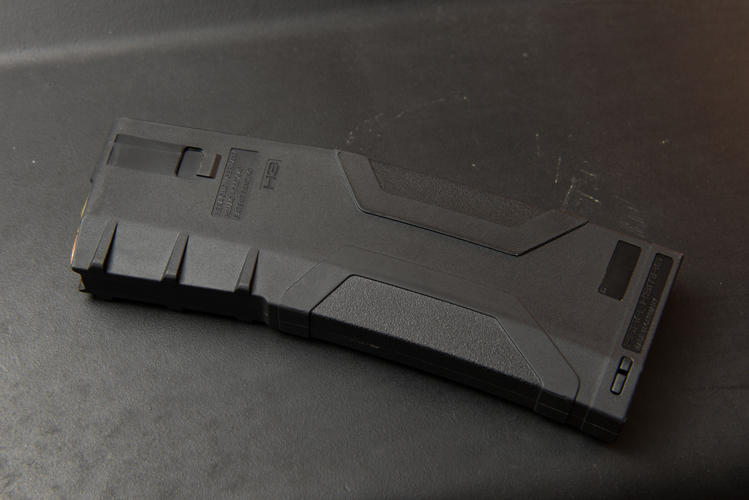
As a real quick aside, we think it's worth mentioning that our WK180-C felt very "right," as in it wasn't too tight nor was it too loose. There's no perceptible play in the handguard, and while magazines were able to drop free, popping a fresh one in the magazine well didn't give the impression of throwing a hot dog down a hallway, either. Likewise, the safety detent was just right, and the sound of the bolt closing elicited a wonderful ringing noise; indicative of smooth and well-fitted surfaces throughout the action that causes the bolt's closure to reverberate with the barrel. It's not unlike the delightful "ping" noise associated with a well-fettled M14- or M1-pattern rifle and is a good testament to the WK180-C's build quality.
In terms of shooting, the dominant aspect we noticed was the absolute lack of recoil and the gun's pointability. The closest thing we can come up with that'd be comparable would probably be a 9mm carbine. Being as light as it is, and fitted with the standard birdcage flash hider, we sort of figured it'd recoil like the average AR-15 it emulates so well, but due to the lack of reciprocating mass and the short distance all the reciprocating components traverse, it is incredibly soft-shooting. Our Colt Canada MRR and IUR rifles, shot alongside, both recoil considerably more. Pop a muzzle brake, a magazine well, and a better trigger on this thing and you'd have a monster competition gun on your hands.
And as you can see from the attached accuracy table, it's not exactly inaccurate either. Rested up in our lead sled, we got the expected wide variety of test results from our WK180-C; the side-effect of shooting .223 Remington and 5.56 NATO ammunition in a gun that's chambered for neither and both at the same time (.223 Wylde). Furthermore, when you're shooting bullets weighing between 35 and 77 grains, you expect a pretty good degree of variability, but we're happy with the WK180-C's performance with the tried-and-true stalwarts of these calibres. With your average 55- or 62-grain plinking ammo it's generally under two MOA, which is right where Wolverine Supplies promised it would be, and reloads would get it into sub-MOA territory. Needless to say it's more than accurate enough for hunting use.
Of course, there is one area where the WK180-C's enviable price point shows through: The trigger. Mil-spec triggers for AR-15 rifles are usually quite good out of the box. The trigger on the WK180-C isn't and leads us to believe that Kodiak opted to use a generic non-mil-spec lower parts kit trigger assembly to save a few bucks. It's the right call, to keep the price point down and get guns out the door, but we'll be replacing the trigger as soon as possible.
This brings us to the second issue with the WK180-C: Its status as a bit of a black sheep. For example, the trigger components themselves are AR-15 parts, but the pins that hold them in place are slightly longer due to the WK180-C receiver being quite a bit thicker (in the photos, you can see how much thicker the receiver is above the standard A2 pistol grip, where an AR-15 receiver sits flush with the grip). So any replacement trigger components will need to be installed on the factory WK180-C pins. Likewise, although the trigger pocket looks to share its dimensions with AR-15 trigger pockets, the bolt-hold open lever rides along the top of the pocket in the WK180-C and may foul some drop-in trigger mechanisms. Likewise, the wider receiver will likely prevent any AR-15 safeties from being installed.
Other notable changes include a slightly repositioned gas piston arrangement that's slightly higher than an AR-180's, due to the WK180-C's use of a conventional AR-15 barrel and barrel nut. Of course, if you think that the use of an AR-15 barrel means you'll be able to swap in a barrel of another calibre, another black sheep problem may appear: The bolt is specific to the WK180-C due to the cam pin position, and so until alternate bolts begin appearing, you're stuck with calibres that share the bolt face dimensions of .223 Remington and 5.56 NATO. And of course, as with so many other guns, while the use of an AR-15 barrel nut may allow the fitment of some aftermarket hand guards, the height of the gas system may preclude that, so it's buyer beware on that front. That said, we wouldn't be looking to replace the factory one any time soon; it feels good in the hand and works well with plenty of M-Lok real estate.
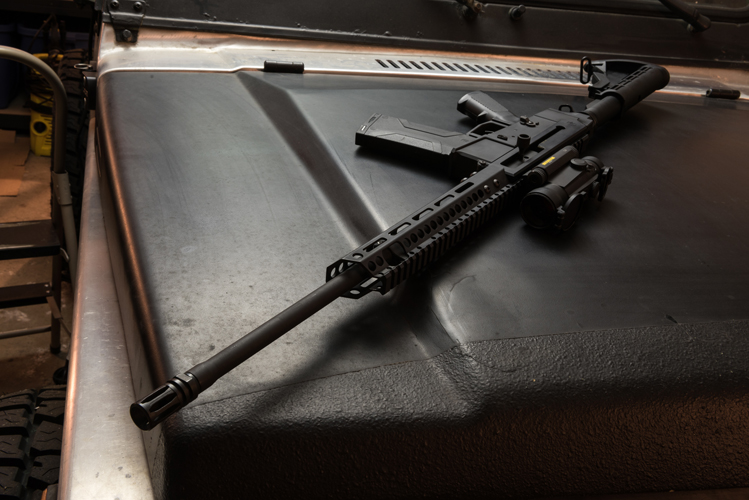
For a very long time, non-restricted modern sporting rifles like this have been something of a luxury; usually costing upwards of $1800. That's kept the Canadian market for such things somewhat constrained, as the high price of non-restricted modern rifles has made them uncommon oddities to see afield; guns that hunters and farmers are forced to justify using to other gun owners, instead of simply being accepted as the norm like they are in other jurisdictions. But now, there's an option that's really no more expensive than the average bolt-action rifle, and could very easily be made lighter than one. And once more deer-friendly calibres start rolling out, as we're sure they will, well… this could be a real game-changer… and taker.